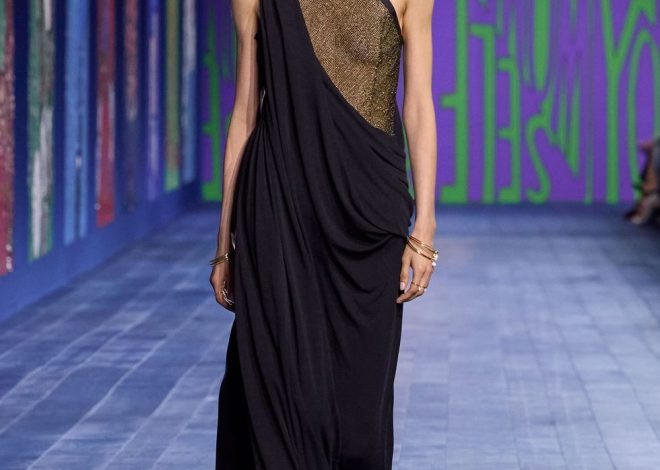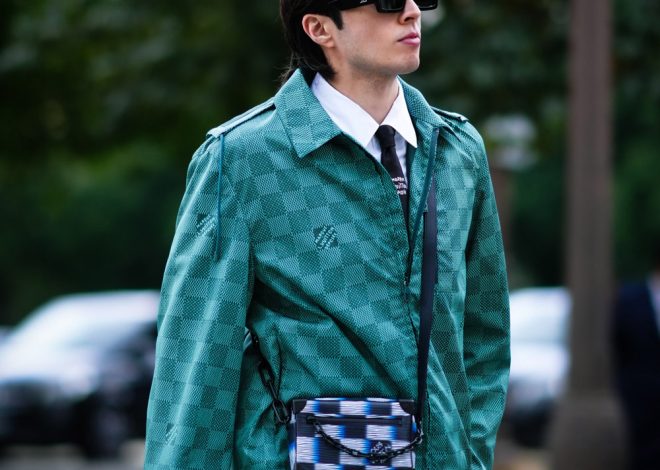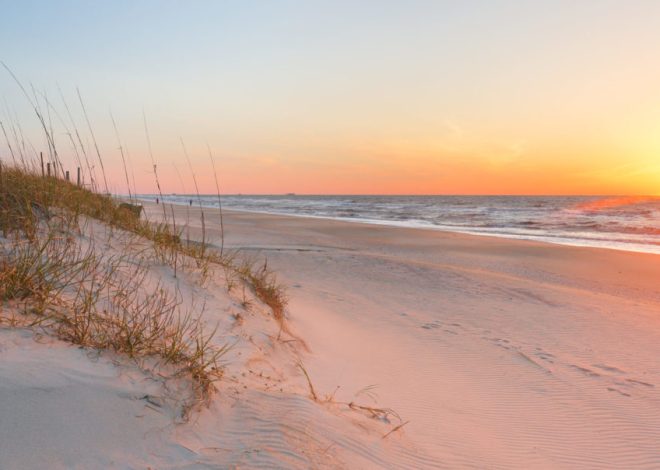
Native American designers embrace size inclusivity
As high-fashion runways have become synonymous with “ultrathin” models who often max out at a women’s size 2, Native American designers have been paving a different and arguably more inclusive path.
It’s a path that includes a range of shapes and sizes, spotlighting Indigenous models who embody silhouettes that are familiar both on and off the catwalk. Call it good medicine or even traditional ways. In any case, according to some Native designers, it has become a standard that reflects an embrace of both people and culture.
“We perceive this inclusivity as an extension of our tribal traditions,” Dante Biss-Grayson, the Osage founder of Sky-Eagle Collection, told In The Know by Yahoo via email. “Just as in events like powwows or intertribal dances, where we embrace diversity as a form of potent medicine and show respect for each individual, the Native/Indigenous fashion shows reflect these same core principles.”
For Biss-Grayson, whose designs range in sizes from small to XXL, he wanted his runway to reflect what he offered his clients.
“In our inaugural runway show, we made a deliberate effort to showcase a diverse range of body types and ages,” said Biss-Grayson, who is based in Taos, N.M. “This practice underscores our dedication to inclusivity and diversity in fashion, values deeply rooted in our Native heritage.”
While Biss-Grayson’s Native heritage is tied to the Osage Nation, a tribe based in northern Oklahoma, these values extend to a wider, pan-Indigenous perspective. In fact, it’s often the focus on community itself that is a starting point for design.
Fashion as empowerment
“I know that [ultrathin sizing] is an industry standard within high fashion or other fashion realms. But for me, when I create my work, it is for a specific demographic,” said designer Lauren Good Day, who is Blackfeet, Plains Cree and an enrolled member of the Three Affiliated Tribes (Mandan, Hidatsa, Arikara Nation) of North Dakota. “I create for my people, and I create to keep my culture and arts of our people alive. Non-Natives are welcome to purchase, appreciate and collect my art, but I do create specifically to keep our culture alive and for Native people — our people — to feel empowered in what they wear.”
Feeling empowered is arguably a tricky sentiment within the world of mainstream high fashion. While luxury designers claim to want to create looks that embolden its wearers, what is often shown on catwalks and in photo shoots excludes the average size 16 woman and can simultaneously engender feelings of inadequacy for those who are among its most avid customers — including youth.
“It’s no secret that for most of its history, the fashion industry has exalted exactly one kind of body: tall, slim and young; able-bodied, cisgender; as a general rule, white,” Maya Singer writes in Vogue. “The social and psychological costs of that ideal are enormous, roughly on par with the billions — trillions? — in profits totted up by businesses peddling diets and cosmetic enhancements and antiaging cures, and it is paid not just in dollars and pounds but in the mental tax on women held hostage to the love-hate relationship with their bodies ….”
Spotlighting a range of body types
Native designers like Good Day, on the other hand, are challenging that perspective — spotlighting not only a range of body types but also Indigenous faces in general. Those include Afro-Indigenous, mixed Indigenous and Native Hawaiians as well.
“I am very inclusive when it comes to working with all different types of body types,” Good Day said. “I do tend to keep it Indigenous just because I create for my people with the intention for them to feel empowered, and I want them to see themselves within the art, but even within the models as well.”
Alexander Simpson, owner and operator of Aeroprey modeling agency and photography in New Mexico, which features a diverse roster of Indigenous, Hispanic and mixed-race models, admits to feeling the pressure to cast models of a certain size.
“Absolutely I feel pressure to stick with the status quo of all Models are supposed to be Ultrathin,” Simpson told In The Know by Yahoo via email. “Which is why if designers or Fashion Show Directors don’t accept my diverse team of Models, I simply refuse to work with them, and pressure is relieved.”
Simpson admits that ultrathin models “aren’t going away anytime soon,” but he adds that “it’s time that ‘Real’ Women have their shot.” After all, what he says he’s looking for in particular are models who can “confidently showcase they can handle the runway.”
“I wanted to make clothes for everyone of all shapes and sizes”
And while the Native community and beyond has celebrated the mainstream success of Indigenous model Quannah Chasinghorse (Hän Gwich’in/Oglala Lakota), Native designers are effectively saying “the more, the merrier.” Whereas it was noteworthy that fashion houses like Michael Kors, Dolce & Gabbana and Chanel cast more than one midsize or plus-size model in their shows this past season, according to the New York Times, Indigenous designers at this summer’s Southwest Association for Indian Arts (SWAIA) Indigenous fashion show in Santa Fe made size diversity the norm rather than the exception.
“When I started getting into fashion, I wanted to make clothes for everyone of all shapes and sizes,” Elias Jade Not Afraid, a designer from the Crow tribe in Montana who was featured in SWAIA’s fashion show along with Good Day, told In The Know by Yahoo via email.
Growing up on the tribe’s reservation, Crow noted that there is limited access to healthy food options at the stores in his community — an issue that is prevalent within Indian country in general, with food insecurity affecting 25% of American Indian and Alaska Natives (double, and sometimes triple, the rate of white Americans), according to the Center on Budget and Policy Priorities.
“[D]ue to that fact, some of us on the reservation are overweight or have to shop in the XL+ so I wanted to find a manufacturer that would go to 5XL and found one and it went off from there,” Not Afraid added.
That inclusivity extended to Not Afraid’s runway as well. In addition to having the opportunity to express himself artistically in fashion shows, the designer said he wants to create opportunities for models who might not have it otherwise.
“[W]hat is amazing is that it also gives us the opportunity to give other girls an opportunity to model in a fashion show or in a photo shoot who normally wouldn’t have that opportunity to model,” he said. “It also gives me a chance to talk with them and talk about what they want in clothing and what they look for, what is missing, because they are the ones who will be wearing it.”
That’s a sentiment that Good Day supports as well. After all, besides the Native community as a whole, the Bismarck, N.D.-based designer admits she wants to see herself reflected in the art she creates for others.
“I’m a firm size 16. I wear a 2X within my own clothing,” Good Day said. “And even for myself to see somebody with a similar body type, it is very important to me to see myself in my work as well.”
And that, in turn, she says serves as an important message for youth, who are affected by images portrayed in mainstream media and social media.
“I feel like when we show ourselves in a positive light and we show ourselves as role models doing good things within our communities,” she said, “hopefully our young people can see that and they can be inspired by it.”
In The Know is now available on Apple News — follow us here!
More from In The Know:
Listen to the latest episode of our pop culture podcast, We Should Talk:
“I definitely find that contouring vertically like this gives the face a softer appearance.”
In The Know hosted its second Native Changemakers event on Nov. 1 with a panel of creatives looking to reclaim their future with Indigenous representation.
“Alandria Maddox is an exceptional student and an integral part of the drum majors that lead the Sound of the Natural State.”
Four creators join In The Know’s second annual event spotlighting Native American communities.


